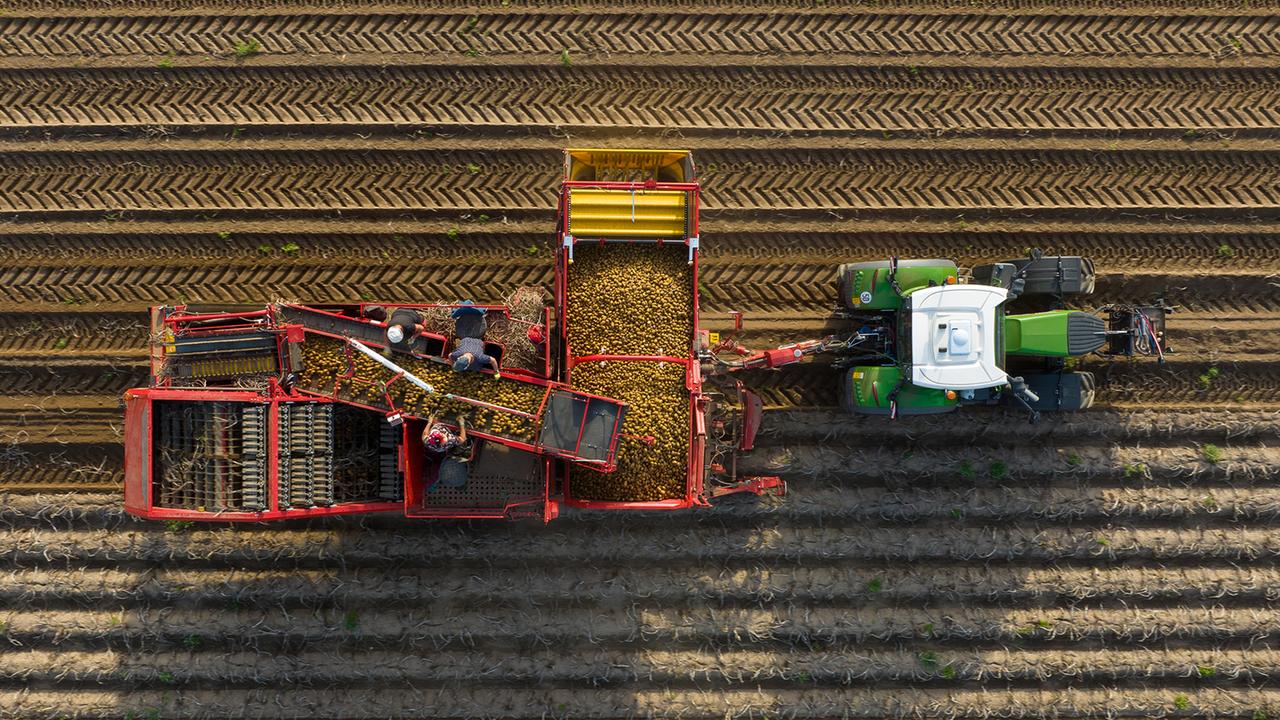background
The prices that farmers receive for their products rose again in May. This is an important indicator for consumers and also for the European Central Bank.
If it is too wet, too hot or too cold, it affects the harvest. And thus the costs for producers, i.e. farmers – and ultimately the prices that farmers get for their products.
The producer prices for agricultural products are the prices ex-farm, not the prices you see in the supermarket. And in May, according to data from the Federal Statistical Office, these prices rose by three and a half percent compared to the same month last year, i.e. compared to May 2023. This was due to potatoes, but also to fruit, vegetables and rapeseed. The development in producer prices for animal products was slightly negative compared to the same month last year.
Many factors play a role. The focus is not only on the local weather forecast, but also on the weather forecast around the world and the harvests in many other countries, says Agricultural economist Sebastian Lakner from the University of Rostock. “That means we always look at how stocks are developing in the northern hemisphere, but also in Latin America or Africa in the southern hemisphere.”
This information and data is then incorporated into reports that are read very carefully on the commodity futures exchanges. Agricultural products such as corn, rapeseed or wheat are traded on these exchanges for delivery in the future. “And if the harvest develops positively, that means that prices fall. If there are any signs of a poor harvest, then of course the prices immediately go up because the traders immediately try to get hold of other goods.”, says agricultural economist Lakner.
Trade routes, wars and tariffs are important factors
And at this point, it becomes important how well the trade routes function. The blockage of the Suez Canal during the Corona pandemic clearly demonstrated the consequences this has for world trade: ships had to take long detours, which drove up prices. Wars also have a destabilizing effect on the supply situation.
Accordingly, it is difficult to make predictions about future prices, says Lakner. “The war in Ukraine is also having a massive impact on prices because Ukraine is an important supplier to the world market and this continues to be very difficult.” Tariffs can also make products more expensive. All of this affects the so-called producer prices for agricultural products.
Where interest rate policy has little influence
For economists, the current rise in producer prices was in line with expectations, says Edgar Walk, chief economist at Metzler Asset Management. There are two producer prices that are published: agricultural – that is, for animal and plant products – and general prices. These include industrial goods, machinery and consumer goods such as televisions; goods that you can touch. Walk explains why a distinction is made. “With the consumer price indices, you look at goods, services, food and energy prices – so you split them up.”
And energy prices and food prices are determined on world markets and are also strongly influenced by the weather, says Walk. “The central bank has relatively little influence on energy and food prices with its interest rate policy, while it can have a strong influence on all other prices with its interest rate policy. And that is why there is separation.”
Greater fluctuations
The consumer never sees the producer prices. And the more marketing stages there are between the farmer and the end buyer – such as consumers – the smaller the share of the producer price in the retail price. Nevertheless, they are an important input factor for consumer prices, says economist Walk. “The producer prices provide the impulse that then works its way through the chain and naturally has an impact on consumer prices.”
Producer prices fluctuate much more than consumer prices – and they have a certain lead time of about one or two months. In concrete terms, this means that if producer prices rise, it can be deduced that consumer prices could also rise in one or two months. Producer prices therefore say something about the future trend of inflation.
That is why they are fundamentally important for the European Central Bank. But producer prices measure goods. And inflation in relation to these and to food and energy is easing. Inflation in services remains stubborn. Accordingly, producer and goods prices are not the main focus of the ECB at the moment.
Climate change as an uncertain factor
When it comes to the future of agricultural producer prices, predictions are difficult – climate change will cause massive changes in the weather. And that will affect agriculture.
Added to this is a growing world population – and one that is becoming wealthier, says economist Edgar Walk. “We find that when people become wealthier, they consume more meat. This means that the demand for food will tend to continue to rise and production is likely to come under pressure due to climate change.” A perspective that shows: food production and its prices will become increasingly important in the future.





